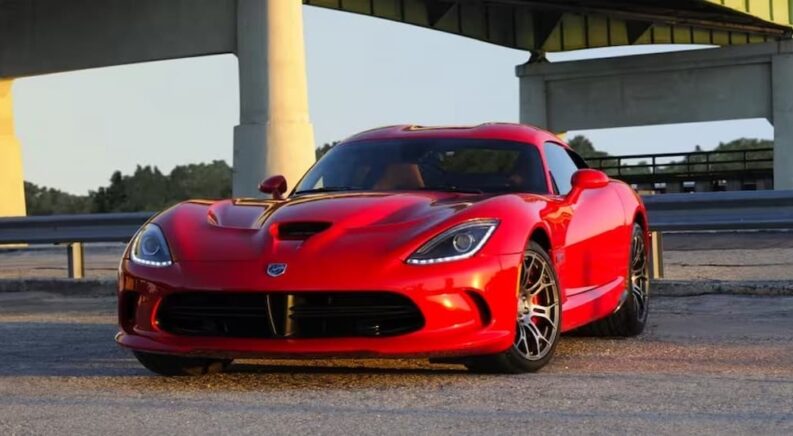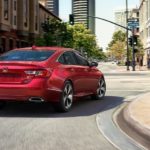The 2000s were a golden era of automotive engineering, when fuel efficiency took a backseat to raw power and symphonic exhaust notes drew sighs of appreciation and anticipation, automakers pushed the boundaries of cylinder counts. It was an era of excess in the engine realm, with brands like Lamborghini, Porsche, Lexus, Audi, and others, teasing our insatiable need for power and pure thrills with their V10 powerhouses.
These weren’t engines designed with compromise in mind. They were statements; brash, unapologetic demonstrations of what engineers could do when allowed and encouraged to prioritize performance over practicality. However, those ultra-exclusive brands weren’t the only ones to offer more than eight cylinders under the hood. Shopping at a used car dealer can turn up some surprising V10 gems from more pedestrian brands like Ford, Dodge, Ram, and Volkswagen if eight cylinders simply aren’t enough.
The V10 at a Glance: Inherently Complex
Genuinely appreciating the V10 models from the past requires appreciating the engine itself and understanding its complexity and the factors that led to its discontinuation. In a sense, the V10 laid the framework for the powerhouses that define today’s modern landscape.
More powerful than a V8 and more efficient than a V12, the V10 occupied a unique space in the automotive landscape. It catered to those with a penchant for performance and exclusivity. And while it’s less common than the V8, it’s significantly more accessible and efficient than the ultra-rare V12. The V10 became the sweet spot for enthusiasts with legendary models like the Lexus LFA, and a few automakers, some more surprising than others, happily obliged.
Even so, hindsight confirms that the V10’s fate was evident from the beginning. Inherently complex by design, a V10 engine isn’t as naturally balanced as a V8 or a V12. This imbalance and instability cause more vibrations and require extensive engineering to operate smoothly. In turn, manufacturing costs skyrocketed, and automakers struggled to recoup the costs as stricter emissions standards sealed the V10’s fate.
The Last of an Era: The V10 Powerhouses
Never about practicality, the V10 was about theater, excess, and the thrill of pushing the boundaries of engineering. These legends showcase as much, etching their names in history as the last of the V10 era.
#1 – Dodge Viper (1992-2017)
If there’s a poster child for the V10, it’s the Dodge Viper. Built on a shoestring budget by today’s standards, the Viper took the world by storm when it debuted in the early 1990s with a massive 8.0L V10 engine under its hood. Gritty, raw, and unapologetically unrefined, the Viper introduced Americans to a new era of performance by putting 400 horsepower under their feet.
The Viper’s grit is unimaginable by today’s standards, with the debut model lacking traction control, anti-lock brakes, windows, and even exterior door handles. Yet, its rawness became its calling card, appealing to drivers looking for a sports car destined to set the benchmark rather than worry about blending in with the crowd.
That mentality defined the Viper’s tenure until 2017, when Dodge bid a fond farewell to the icon. By then, the Viper had evolved into a powerhouse even by modern standards, with the 2017 Viper powered by an all-aluminum 8.4L V10 engine delivering 645 horsepower and 600 lb-ft of torque. Aside from its higher output, the 2017 Viper also features traction control, anti-lock brakes, and multi-stage stability control.
#2 – Dodge Ram SRT-10 (2004-2006)
Just when enthusiasts thought Dodge had reached its limits with the Viper, the American automaker unveiled another glimpse into its ingenuity. The Dodge Ram SRT-10 debuted in 2004, leaving no question about our insatiable need for speed after Dodge stuffed an 8.3L version of the Viper V10 engine under the hood of a Ram 1500 pickup. With the engine roaring to life, the 2004 SRT-10 earned a place in the Guinness Book of World Records as the world’s fastest production truck when it reached a top speed of 154.587 MPH.
Dodge capitalized on the Ram SRT-10’s potency, attempting to broaden its appeal with a Quad Cab targeted to enthusiasts with families. After all, who doesn’t want to drive an outrageously potent truck that puts 500 horsepower and 525 lb-ft of torque at your feet when you’re dropping your kids off at school?
It may seem excessive, but the SRT-10 has already been eclipsed by modern trucks like the Ram TRX and Ford F-150 Raptor R, which use forced induction to make up for their fewer cylinders. For comparison, the Raptor R has a 5.2L supercharged V8 under its hood, with the high-output engine making a jaw-dropping 720 horsepower and 640 lb-ft of torque. Even the base 2025 Ford F-150 Raptor makes 450 horsepower and 510 lb-ft of torque, despite only having half the cylinder count of the SRT-10.
#3 – Ford Super Duty (1999-2010)
Ford’s own foray into the V10 realm wasn’t about chasing supercar dreams but delivering unrelenting capability for those who needed it most. The Ford Super Duty, introduced in 1999, brought the 6.8L Triton V10 to the heavy-duty truck segment, a workhorse engine designed to haul and tow with authority. Producing 310 horsepower and a stout 425 lb-ft of torque in early models, but eventually providing 362 hp and 457 lb-ft in its later iterations, the Super Duty V10 was less about theatrics and more about getting the job done—whether pulling a trailer full of equipment or powering through rugged job sites.
The Super Duty’s V10 was a testament to Ford’s commitment to utility without compromise. While it lacked the exotic flair of its supercar counterparts, its raw torque and durability made it a favorite among contractors and fleet operators. The engine’s deep, guttural rumble was a subtle nod to its power, offering just enough character to remind drivers they were commanding something special. By the time the V10 was phased out in 2010, it had cemented its legacy as a reliable titan in the world of heavy-duty trucks.
#4 – Ford Excursion (2000-2005)
When Ford decided to go big—really big—it created the Excursion. Unsurprisingly, the largest SUV of its time was powered by the same 6.8L Triton V10 found in the Super Duty. Launched in 2000, the Excursion was a behemoth built for those who needed to tow, haul, and carry passengers in unmatched comfort. With 310 horsepower and 425 lb-ft of torque, the V10 gave this massive SUV the muscle to tow up to 11,000 pounds while carrying a full load of passengers and gear.
The Excursion was less about speed and more about dominance. Its sheer size and capability made it a legend among those who valued function over flash, from large families to adventurers tackling cross-country trips. The V10’s low-end torque ensured it could handle any load with ease, while its distinctive exhaust note added a touch of personality to an otherwise utilitarian beast. By its discontinuation in 2005, the Excursion had carved out a cult following, with used models still being sought after today for their unmatched versatility.
#5 – VW Touareg (2004-2008)
Volkswagen took an unexpected swing at the V10 game with the Touareg, a luxury SUV that married German engineering with diesel-powered bravado. Introduced in 2004, the Touareg’s 5.0L V10 TDI engine churned out 310 horsepower and an earth-shaking 553 lb-ft of torque, making it one of the most potent diesel SUVs of its era. This wasn’t a vehicle built for the racetrack but for commanding the road with effortless authority, whether cruising highways or tackling off-road trails.
The Touareg V10 TDI stood out for its refined yet muscular character. Its turbo-diesel V10 delivered torque in waves, giving drivers the sensation of unstoppable momentum. Paired with Volkswagen’s sophisticated 4XMOTION all-wheel-drive system, it offered versatility that few competitors could match. Though discontinued after 2008 due to emissions regulations, the Touareg V10 TDI remains a cult classic for those who crave a unique blend of luxury, capability, and V10 swagger.
A Symphony Now Silenced
The V10 is a glorious anomaly—a wail splitting the air like a battle cry in an age when regulations hadn’t yet tamed performance. These V10 powerhouses weren’t built to be sensible; they were built to be remembered. Their soundtracks became their legacies, serving as spine-tingling reminders of a bygone era.
Today, regulations and changing priorities have led to the demise of the V10. Turbocharged sixes, supercharged V8s, hybrids, and EVs carry the torch of performance into the future. They’re fast—often faster—but they lack the same visceral theater.
The V10 was more than an engine; it was a philosophy—a moment in time when engineers and automakers dared to go bigger, louder, and wilder. And for those lucky enough to find one of these V10 models sitting on a used car dealership lot, that bygone era hasn’t ended just yet.




